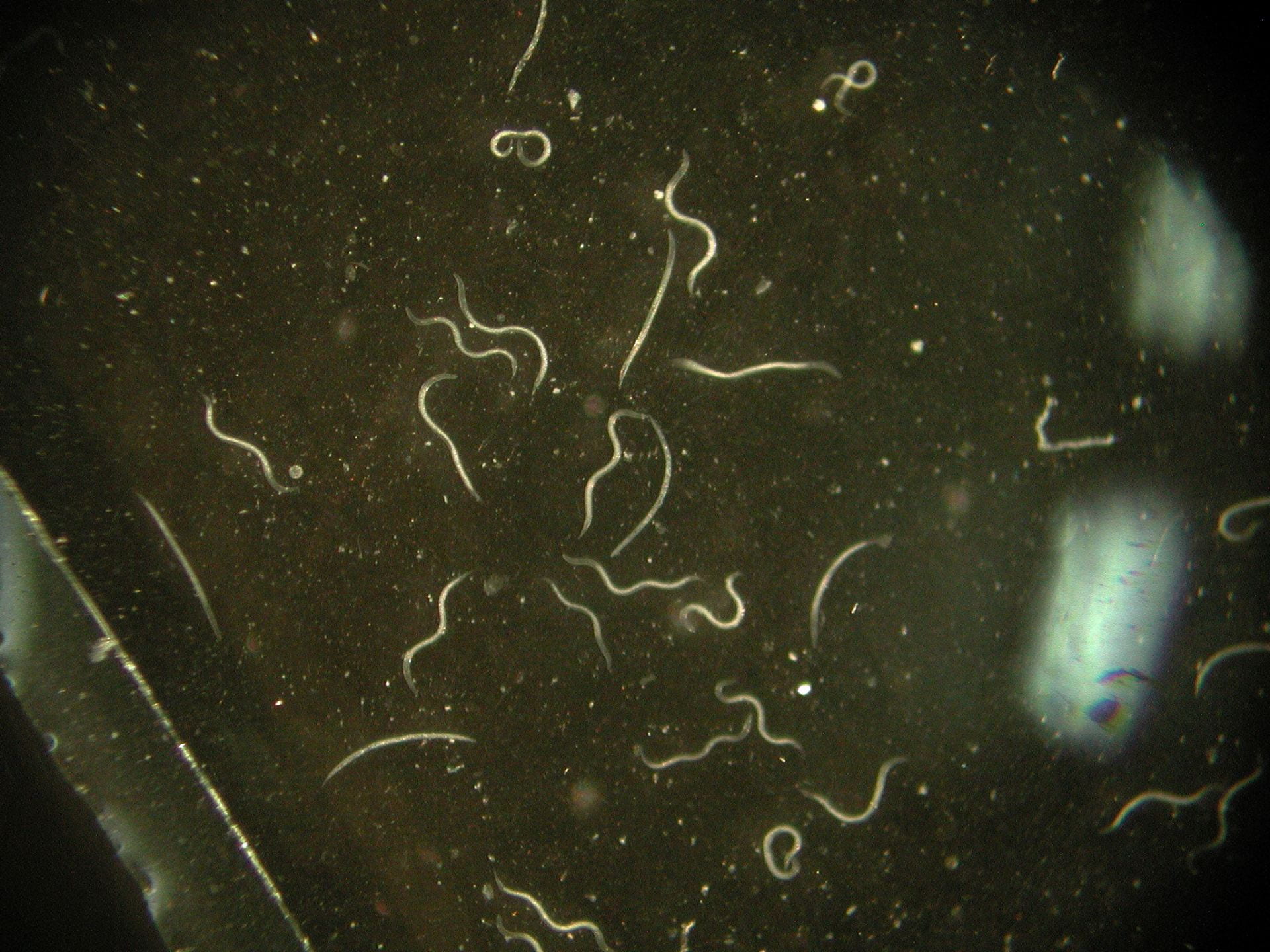Today we reach the end of our in-depth look at our most recent annual report from the New York State Integrated Pest Management Program. While many of you receive it in the mail, the large number of in-person sharing we generally do as we speak with people around the state was obviously limited. We continue to do our best to reduce risk from pests and treatments, and to reduce the risk of Covid-19.
WE LOOK FORWARD TO A RETURN TO THE MANY WORKSHOPS, PRESENTATIONS, ON-SITE EVALUATIONS and GATHERINGS THAT WE VALUE AS PART OF OUR FOCUS!

Nematodes Go to School
For decades, researchers and practitioners alike have played around with beneficial nematodes to control insect pests in turf and agricultural crops. These nematodes are microscopic worms that move through soil looking for host insects to infect. Once inside a grub or other insect, the nematode releases bacteria that feed and reproduce, eventually releasing a toxin that kills the host. As an added bonus, nematodes often persist for years in the soil after just one application—they’ve been shown to permanently establish in both alfalfa and corn. Nematodes are an ideal biological control agent because they occur naturally in soil and can be applied to boost pest control. Now these tiny but mighty native worms have been enlisted to help protect school playing fields from pests, and to help teach science, too. Dr. Kyle Wickings, a Cornell entomologist, has been using native New York beneficial nematodes on school playing fields to target grubs, and to reduce the need for pesticide sprays. NYSIPM staff teamed up with him to train teachers in four school districts to add nematode sampling to their science curriculums. In addition to student-collected data, the team inoculated eight playing fields at three schools and then sampled the fields in the fall for signs that the little worms were sticking around. To date, results have been too variable to make recommendations, but our researchers—as tenacious as these worms—will keep on testing.

(Above) Students learned that these beneficial nematodes (round worms) might be hard to see without a microscope, but are hard at work attacking grubs in the soil under the playing fields. David Chinery, Horticulture and Turf Educator at CCE Rensselaer County, helps this middle school teacher get her hands dirty.
Here, during our Nematodes in the Classroom Workshop, she sifts through soil for dead wax worms that indicate whether nematodes are present and successfully parasitizing insects.
The Spotted Lanternfly: They Get Around
Hailing from Asia, the spotted lanternfly (SLF) arrived in Pennsylvania in 2012 on landscaping stone. They’ve been ravaging vineyards and making a mess of backyards ever since. SLF are clumsy fliers but adept hitchhikers. They lay their eggs on practically any hard surface—wood, rusty metal, railroad cars, and shipping containers are all fair game. SLF has been called, “the worst invasive we’ve seen in 100 years.” Of their arrival here, New Yorkers now say, “It’s not a question of if, but when.” A bright spot is the incident command structure formed by New York’s Departments of Environmental Conservation, Agriculture and Markets, and Parks. They started preparing early, and asked NYSIPM to help with outreach and awareness. Our goal? Immediate identification and education to prevent SLF establishment for as long as possible. Delaying their imminent debut gives us more time to inform the public, while allowing researchers to expand the management toolkit—including the use of natural enemies. We’ve created pest alerts, online courses, identification guides, YouTube videos, slide sets, and webinars. NYSIPM talks about SLF a lot. In the first year our staff mentioned SLF in more than 60 presentations, alerting nearly 2,500 participants representing the grape, wine, apple, hops, ornamentals, vegetable, berry, turf, and landscape industries. The good news? The efforts seem to be working. At the time of printing, a few SLF have been sighted in New York, but no infestations found. We want to give a shout-out to our friends in Pennsylvania who have generously shared information, and to New York’s government agencies and extension educators for getting the word out.

(Above) Dressed to kill. These beautiful yet destructive adult spotted lanternfly adults are out and about in the late summer and fall. Watch for them, but also for egg masses and nymphs the rest of the year.
In closing, our annual report is an important part of our program because it showcases our service to our stakeholders and justifies the trust of our collaborators and funders. Highlighting many, but not all, of our accomplishments takes time. Collecting the stories and photos–after narrowing down the list of ideas–and then writing concise and interesting stories is the work of our director and commodity directors. After the retirement of our lead staff writer, Science Writer Mary Woodsen, we want to thank Mariah C. Mottley for her contribution!
